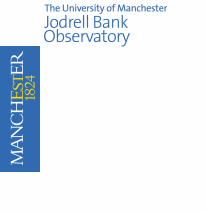
Modern Radio Universe - Science Rationale
This meeting will focus on the current state of knowledge, as revealed by observations and theory, of the key science themes to be addressed by the Square Kilometre Array (SKA).
The SKA will provide a step change in the capabilities of world's radio telescopes. With an effective collecting area more than 30 times greater than the largest telescope ever built, combined with a wide frequency coverage (few hundred MHz up to possibly 25GHz) and high spatial resolution (better than 0.1 arcsecond at 1.4 GHz) will make the SKA the world's premier radio telescope. With such a telescope, some of the major questions of our time, such as What are dark energy and dark matter? What is the origin of the observed structure in the Universe? How did planets like the Earth form? can be addressed.
The new observational opportunities provided by the SKA will open up vast areas of astrophysical research, allowing many fundamental physical problems to be investigated. The primary theme running through this meeting will be our current observational and theoretical understanding of the questions which will be impacted upon by the future science done using the SKA. The current key science drivers for the SKA encompass much of astrophysics, from cosmology to formation of planets, and can be summarised by a few key areas.
The evolution of galaxies and cosmic large scale structure
Probing the Dark Ages - the first black holes and stars
Strong field tests of gravity using pulsars and black holes
The origin and evolution of Cosmic Magnetism
Cradle of life
What is the equation of state of dark energy? Does it change with cosmic time? How do galaxies assemble and evolve? With its wide field of view (>1 sq deg) the SKA will be able to map out the cosmic distribution of neutral hydrogen (HI) in the 21 cm line at cosmological distances that are almost entirely inaccessible to current instrumentation. This will enable revolutionary progress in the fields of galaxy evolution and large-scale structure.
What happened during the epoch of reionization? The SKA has the ability to observe the very first black holes, stars and galaxies which shaped the development of the universe during the epoch of reionization. The SKA will have the sensitivity to pick out the continuum radio emission of the very first quasars and make high resolution spectra of high-redshift radio sources (e.g in HI and CO). In particular, HI spectra will yield detailed information about the early evolution of the cosmic web, the growth of ionized regions around protogalaxies, and even provide the only known direct way to observe, in absorption, minihalos or small clumps of dark matter and gas in the IGM that are predicted by many structure formation theories.
Is Einstein's Theory of General Relativity correct in the strong field limit? Is the cosmos filled with a gravitational wave background? It has been proposed that the ultimate theory of the Universe will involve the unification of general relativity with quantum mechanics. We can expect that this theory of quantum gravity produces somewhat different predictions than general relativity. But how can we measure such deviations? Through its sensitivity, sky and frequency coverage, the SKA offers the possibility of probing this strong-field realm of gravitational physics by finding and timing pulsars. The SKA is expected to discover - besides extragalactic pulsars - a very large fraction of the pulsars in the Galaxy, resulting in 10,000 to 20,000 pulsars, including the discovery of more than 1,000 millisecond pulsars.
Is the overall Universe magnetic? If so, has the Universe's magnetism affected the way in which individual stars and galaxies form? And ultimately, where has all this magnetism come from Cosmic magnetism spans an enormous range in its strength, varying by a factor of 1020 between the weak magnetic fields in interstellar space and the extreme magnetism found on the surface of collapsed stars. Because these cosmic magnetic fields are all-pervasive, they play a vital role in controlling how celestial sources form, age, and evolve. Radio is the key, in many areas even the only, wavelength to study this cosmic magnetism.
Are there Earth-like planets around other stars? Do they host intelligent life? By observing the process of planet building in the dusty disks that form around young stars, the SKA will be able to tell SKA will be able to tell us how Earth-like planets. It may be the only instrument capable of imaging, with the angular resolution required, the thermal emission from dust in the inner regions of disks where Earth-like planets are likely to be located. In addition, the SKA offers the possibility of detecting radio transmissions that would provide evidence for intelligent life among the stars.
The SKA will be the largest development in radio astronomy during the coming decade. However, the SKA and other next generation radio telescopes builds upon a long history of developments in radio astronomy. This meeting will aim to celebrate this history whilst looking to the future. October 4th 2007 will be the 50th anniversary of the launch of Sputnik I and the radar detection of the Sputnik launch rocket by the 76-m (250-ft) Lovell telescope at Jodrell Bank Observatory. Hence this conference, held in Manchester, will celebrate 50 years of the Space Age and the Lovell telescope by reviewing the state of modern radio astronomy and the new scientific horizons that will be opened by the next generation of radio telescopes and in particular the SKA.
